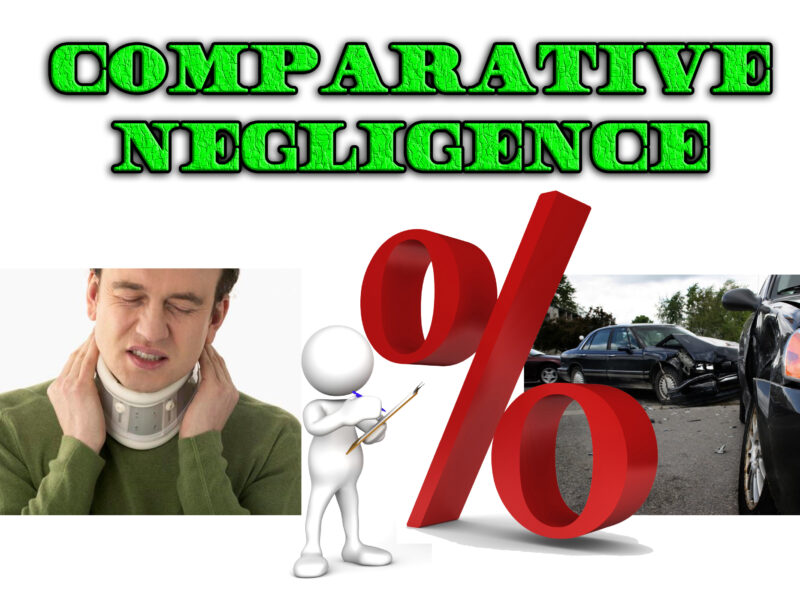When accidents occur and injuries result, determining who bears responsibility isn’t always straightforward. California follows a “pure comparative negligence” system, which provides a nuanced approach to assigning fault and determining compensation in personal injury cases. If you’ve been injured in an accident in California, understanding how comparative negligence works is crucial to protecting your rights and securing fair compensation.
What Is Pure Comparative Negligence?
California’s pure comparative negligence system allows injured parties to recover damages even if they were partially at fault for the accident. Under this system, the court determines the percentage of fault for each party involved, and damages are awarded accordingly. Unlike some states that bar recovery if a plaintiff is more than 50% at fault, California allows recovery regardless of the plaintiff’s degree of fault – even if they were 99% responsible for the accident.
How Does Comparative Negligence Work in Practice?
Consider a car accident where Driver A suffered $100,000 in damages. If the court determines that Driver A was 30% at fault and Driver B was 70% at fault, Driver A would be able to recover 70% of their damages, or $70,000. This demonstrates how the system proportionally reduces compensation based on each party’s degree of responsibility.
The pure comparative negligence rule applies to various types of personal injury cases, including:
- Vehicle accidents
- Slip and fall incidents
- Product liability cases
- Workplace accidents
- Medical malpractice claims
Determining Fault Percentages
Courts consider various factors when assigning fault percentages in comparative negligence cases:
- Traffic laws and regulations violated
- Witness testimony
- Physical evidence from the accident scene
- Expert testimony and accident reconstruction
- Surveillance footage when available
- Police reports and official documentation
The Importance of Evidence in Comparative Negligence Cases
Strong evidence is crucial in comparative negligence cases, as it directly impacts the percentage of fault assigned to each party. Documentation such as photographs, medical records, and expert testimony can significantly influence how the court apportions responsibility. Working with an experienced personal injury attorney who understands how to effectively gather and present evidence can make a substantial difference in the outcome of your case.
Comparative Negligence vs. Contributory Negligence
California’s adoption of pure comparative negligence represents a more equitable approach compared to the traditional contributory negligence system still used in some states. Under contributory negligence, if a plaintiff is found even 1% at fault, they are completely barred from recovering any damages. California’s system recognizes that accidents often involve multiple contributing factors and allows for a more nuanced approach to compensation.
Statute of Limitations and Comparative Negligence
In California, the statute of limitations for personal injury cases is generally two years from the date of injury. This deadline applies regardless of the comparative negligence considerations in your case. Failing to file within this timeframe typically bars you from pursuing compensation, regardless of the strength of your case or the distribution of fault.
Insurance Companies and Comparative Negligence
Insurance companies often use comparative negligence principles during settlement negotiations. They may attempt to assign a higher percentage of fault to the injured party to reduce their payout obligations. This makes it essential to have skilled legal representation who can advocate on your behalf and ensure that fault percentages are fairly assessed.
Why Legal Representation Matters
Navigating comparative negligence cases requires a thorough understanding of California law and significant experience in personal injury litigation. An experienced attorney can:
- Gather and preserve crucial evidence
- Work with expert witnesses to establish fault
- Negotiate with insurance companies
- Present your case effectively in court if necessary
- Ensure your rights are protected throughout the legal process
Getting Help With Your Case
If you’ve been injured in an accident where fault may be shared among multiple parties, don’t let concerns about partial responsibility deter you from seeking compensation. California’s pure comparative negligence system ensures that you may still be entitled to significant compensation even if you were partially at fault.
Contact our experienced personal injury attorneys at Woolf Legal to discuss your case and understand how comparative negligence might affect your right to recovery. We can help evaluate your situation, gather necessary evidence, and fight for the compensation you deserve under California law.
Remember, time is critical in personal injury cases. The sooner you seek legal representation, the better positioned you’ll be to build a strong case and protect your rights under California’s comparative negligence system.

